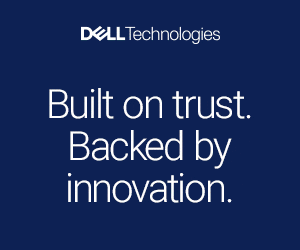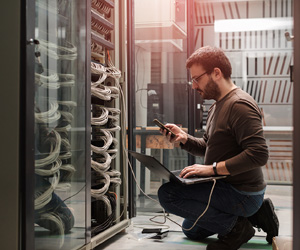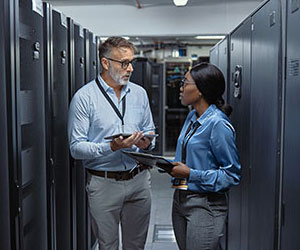Smart cities might sound like something out of a sci-fi movie, but we already have the technology necessary to roll out early versions in most developed nations.
So-called smart cities use Internet of Things (IoT) devices to collect data from connected sensors, meters, lights and other devices. The data is then analyzed at the edge and the core and eventually used to improve travel, safety, utilities, infrastructure and other services.
Pilot programs to test, improve and deploy smart city technology can currently be found in major metropolitan areas, including Paris, London, Copenhagen and New York. If they’re successful, smart city infrastructure could begin to appear in more cities and eventually become commonplace around the globe.
Get smart
Why build smart cities? The reasons are as numerous as they are important.
For one thing, smart cities will help reduce the environmental impact of travel and power consumption by improving water and energy management, optimizing waste removal and managing traffic.
For another, smart cities can help reduce crime by using sensors and AI to turn on lights, trigger alarms and alert city officials of any problems that occur. Assuming citizens are protected by appropriate privacy legislation, these advances could make everyday life safer and more convenient for everyone.
Powered by IoT
Without the Internet of Things, smart cities would only exist in works of fiction. IoT adds an Internet connection to common devices, enabling us to gather and control data remotely. If you’ve got a smart lightbulb or other connected device in your home, you’re already taking advantage of IoT.
Now imagine a city-wide web of smart devices working in concert to ease traffic flow, increase energy efficiency and maintain vital utilities like water and power. It’s no wonder there will be an estimated 3.74 billion IoT connections worldwide by 2025, according to Insider Intelligence.
All those connections will be made by a wide array of devices. For instance, smart utility meters will connect to a smart energy grid, enabling providers to increase efficiency and better prevent power outages.
On the roads, connected vehicles will gain the ability to relay their positions, speeds, destinations and other information to smart city sensors as well as the vehicles around them. By aggregating and analyzing that data, smart cities will be able to act like a kind of airport control tower, directing autonomous vehicles to help avoid accidents, congestion and pedestrian traffic.
A smarter future
With testing currently underway, it’s only a matter of time before cities with high population densities begin to deploy smart city technology. The sensors, AI-powered analytics and IoT connectivity are already available. Now all we need is time, money and political will.
Developing smart cities will require patience and legal safeguards. But if we can make it work, we may soon enjoy the benefits of more time, less crime and an environment we can pass on to future generations.













